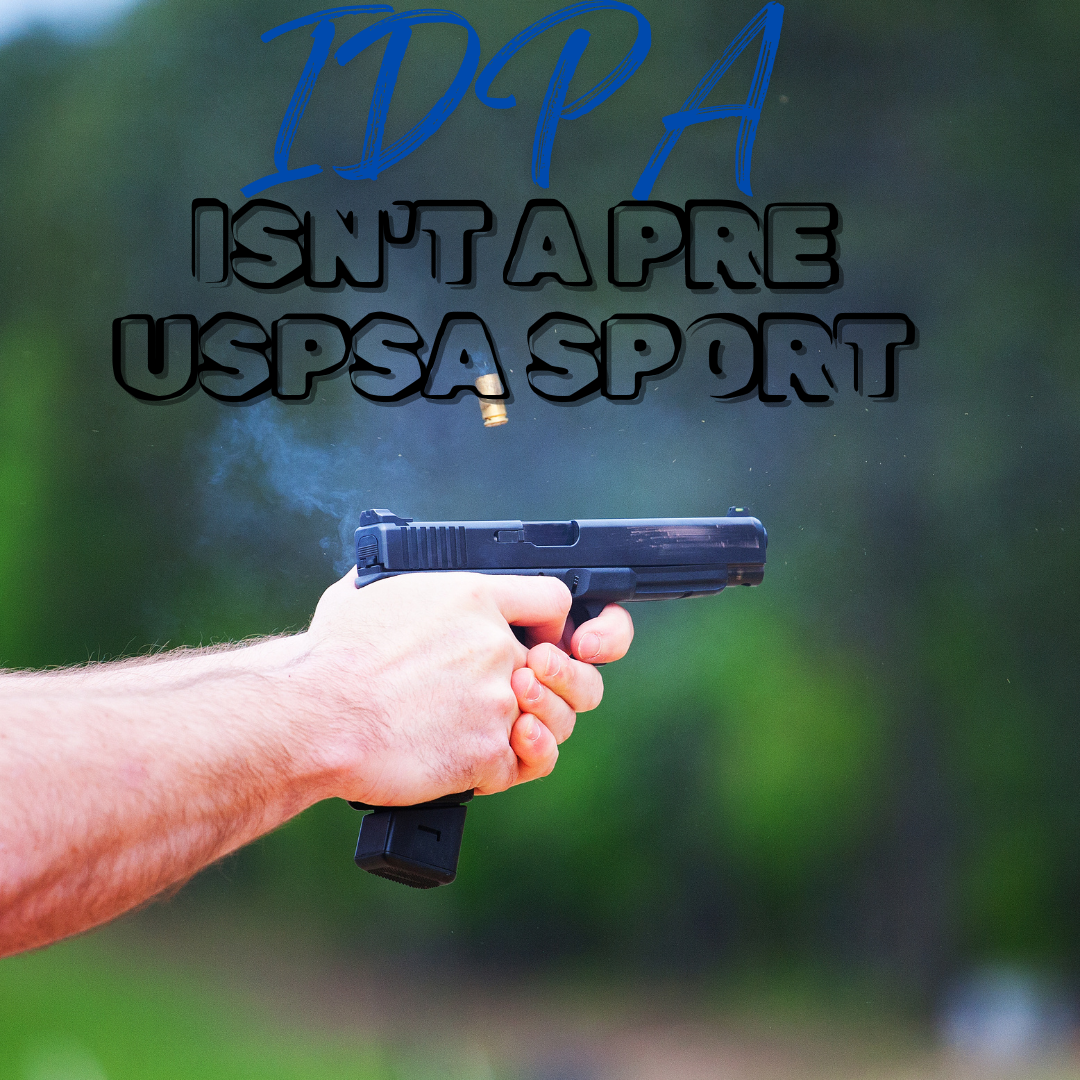
WRITTEN by Aaron Lawson
First off, this isn’t a bash at IDPA at all—we are just going to go through what separates it from USPSA and why they really don’t cross streams as far as preparing you for one another. USPSA isn’t going to make you good at IDPA; it’ll just make someone have to do a lot of math for procedurals. Yes, the top 20% can cross-game easily, but most average people can’t.
Let’s dive into the specifics of how IDPA stages are typically set up: they usually consist of 18 rounds or less, with 10 rounds in the magazine for most divisions. You start at division capacity(10+1) unless otherwise specified. The furthest a target can be is 18 yards away. One of the key differences here is the presence of 8-round arrays/positions, which often require you to dump extra rounds into targets or perform a standing reload in the middle of the next position. Dropping a mag with ammo on the ground incurs a penalty. This is the first significant difference between the two sports, and it’s important to understand it to avoid confusion when transitioning between them.



The confusion is because USPSA is either 15-rd production or co, lo, and limited are all 141.25 max mag length divisions, meaning you have 23-25 rd at your disposal in a single magazine. USPSA also allows for 32-rd stages. I’ve even seen and shot 45+ rd stages at locals. You can reload whenever and wherever during the stage, unless it’s otherwise specified in the stage briefing.
Fault lines are used completely differently in USPSA than in IDPA. Fundamentally, it is supposed to be similar, but this is the first time I’ve seen it practiced like that. What I mean is that in USPSA, the fault lines mark the boundaries of the shooting area, and shooters must engage targets from inside this area. IDPA will have 4 ft fault lines on an angle at the end of a wall to force you to engage a target from a specific spot, or to say that you’ve exposed yourself to the bad guys if you go past those fault lines without neutralizing the threat.
Another big one is that USPSA generally doesn’t force you to engage targets in a specific order. You shoot them as they become available, whereas IDPA has 3 ways to engage targets correctly without penalty: 1. Going into a position moving right to the left. You must engage the leftmost target & work to the right. 2. Moving left to right. You must engage the right-most target & work left. 3. Targets are exposed. This is closest to USPSA because you work in tactical priority by distance front to back. Targets are required to be more than 3 yds apart to be on different tactical priority planes. An additional note is some IDPA stages have start sticks & targets in the open, requiring you to move past them with tactical priority.
One of the biggest differences is that an esp-equipped gun for IDPA is often a limited minor gun in USPSA. A carry optics gun for IDPA could be a carry optics gun if it doesn’t have a mag well or ported barrel. If it has a mag well but no ports in the barrel, it’s a limited optics gun. Mag well and ported barrel? Welcome to Open Minor & I hope you got a 170mm.


Accuracy is king in IDPA. You ultimately want all DOWN ZERO because .15 split into -1 is going to cost you .850 seconds if you don’t make it up. That’s a steep penalty. Putting a third shot on a target can be beneficial because of this. A 3rd .20 split for down zero, you are still almost half a second ahead of just letting it go. But, sometimes, this leads to an extra or unplanned early reload, which eats some of the time spent making that shot up. In USPSA, if you’re fast, you can do pretty well by shooting 90-95% of available points. USPSA’s biggest penalty is a no-shoot. It basically takes 20 pts to eat a no-shoot, which hits scores hard. An uncalled mike hurts a lot in both sports.
Even the stage walkthrough process is different. No air gun for IDPA, I guess, because a bad guy isn’t going to give you a chance to airgun before he tries to rob you.
It’s not that you can’t shoot both sports & have fun. In fact, I recommend you do that – but the idea that starting in IDPA is going to prepare you for USPSA isn’t going to work the way you think it will. You will still have a lot of questions about how to shoot USPSA, but you will likely have good fundamental gun handling & solid accuracy if you do start in IDPA. Also, the cost of entry for IDPA is substantially less than USPSA. Having a competitive carry optics gun (shadow2) & rig for USPSA costs about $2300-2600. Keep in mind that IDPA has a 45 oz weight limit. This means polymer and striker steel guns are more competitive. You also have savings with the ability to use off-the-shelf mags if you choose.





